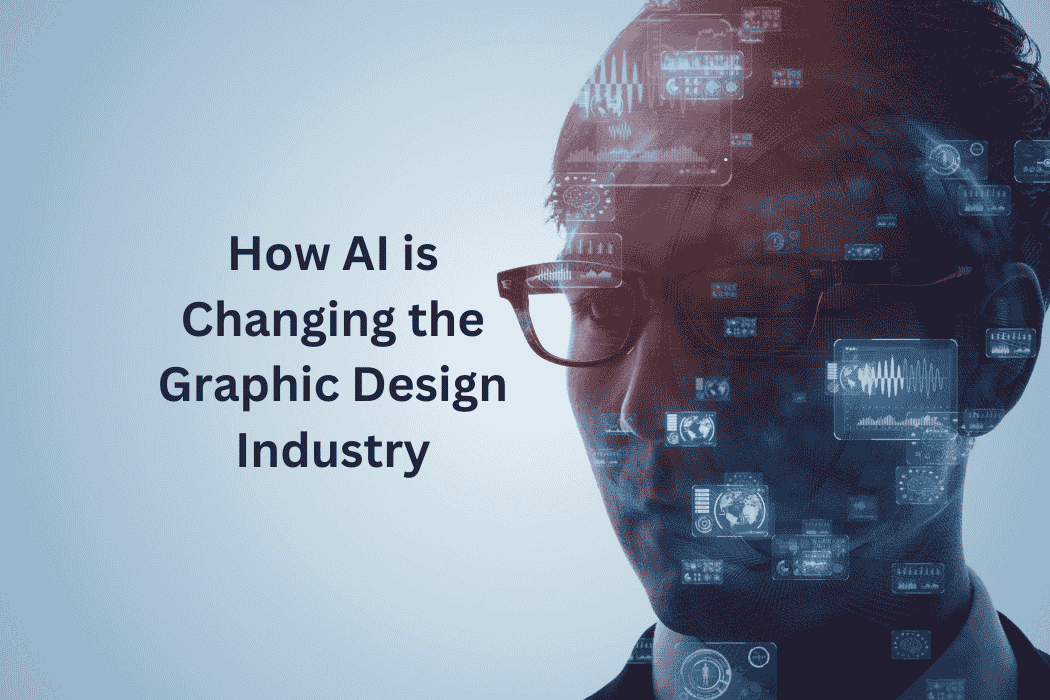We spoke to leading graphic designers to discover how and why they’re using AI. Artificial intelligence is affecting all areas of graphic design and creativity, with some people and disciplines seeing more changes than others. To find out how AI is changing graphic design, we spoke to creatives at four different design agencies.
We asked them a few questions – prompts if you like – and they came back with some rather thoughtful reflections on what AI means to them, their studios, and the industry as a whole. For more on AI and how it can help your creative process, see the best AI for graphic design and 4 ways creatives are using AI.
Table of Contents
The Role of AI in Graphic Design
AI has become an indispensable asset in the field of Graphic Design, fundamentally transforming the creative process and empowering designers with advanced tools and capabilities. One of the primary contributions of AI in graphic design is its ability to automate routine tasks, freeing up designers to focus on more complex and creative aspects of their work. This includes tasks such as resizing images, adjusting layouts, and handling repetitive design elements, allowing designers to streamline their workflows and increase efficiency.
Moreover, AI in graphic design is instrumental in data analysis, helping designers make informed decisions based on user preferences, market trends, and other relevant data. By analyzing vast datasets, AI can provide insights into design elements that resonate most with the target audience, ultimately contributing to more effective and targeted visual communication.
One of the most exciting aspects of AI in graphic design is its role in generating unique design solutions. AI algorithms can analyze vast amounts of visual data, learn from patterns, and suggest innovative design ideas. This not only enhances the creative process but also introduces new possibilities and perspectives, pushing the boundaries of what designers can achieve.
In essence, AI in graphic design is a transformative force, offering designers powerful tools to enhance efficiency, analyze data-driven insights, and unlock new realms of creativity. As technology continues to advance, the synergy between human creativity and AI capabilities is likely to redefine the landscape of graphic design, fostering innovation and pushing the field to new heights.
1. Enhancing Creativity with AI
The integration of AI algorithms in Graphic Design is revolutionizing the creative landscape by providing designers with unprecedented opportunities to explore novel and unconventional design ideas. AI-powered tools are not merely automating repetitive tasks; they are actively contributing to the ideation and conceptualization phase of the creative process.
Designers leveraging AI algorithms can tap into a vast array of possibilities. AI can suggest design elements based on historical data, generate intricate patterns that might not be immediately apparent to human designers, and offer personalized design recommendations tailored to user preferences. This collaboration between human creativity and AI intelligence allows designers to break free from traditional constraints and venture into uncharted creative territories.
The synergy between designers and AI algorithms is reshaping the creative process itself. Instead of merely executing predefined ideas, designers now can co-create with AI, using its analytical capabilities to inspire and guide the creative journey. This dynamic partnership opens up a realm of creative possibilities, fostering innovation and pushing the boundaries of what can be achieved in Graphic Design. As AI continues to evolve, its role in the creative process is likely to deepen, challenging designers to think beyond conventional norms and embrace the limitless potential of this collaborative approach.
2. Efficiency and Automation in Design Processes
AI in Graphic Design offers a significant advantage by automating repetitive tasks, a capability that profoundly impacts the efficiency of the design workflow. Mundane and time-consuming tasks, including image editing, text formatting, and template customization, can be effectively and accurately handled by AI algorithms. This automation not only results in time savings for designers but also enhances the overall productivity and effectiveness of the design process.
By entrusting AI with routine tasks, designers are liberated from the burden of manual, repetitive work. This allows them to redirect their time and energy toward more strategic and creative aspects of their projects. Instead of spending hours on tasks that can be automated, designers can focus on conceptualization, ideation, and the fine-tuning of creative elements. This shift in focus contributes to a more dynamic and value-driven design process, where designers can leverage their unique skills and creativity to deliver more innovative and impactful designs.
In essence, the automation of repetitive tasks through AI not only optimizes the use of designers’ time but also elevates the overall quality and creativity of their work. It transforms the design workflow, enabling designers to allocate their efforts where they can make the most significant impact, ultimately enhancing the efficiency and effectiveness of Graphic Design processes.
3. Personalization and Customization in Design
AI’s role in Graphic Design extends beyond automation; it empowers designers to offer personalized and customized design solutions that cater specifically to the individual needs and preferences of clients. Leveraging AI algorithms, designers can analyze user data and preferences to generate design variations, suggest personalized content, and dynamically adapt designs in real-time.
The ability of AI to understand and respond to individual preferences allows for a level of personalization that goes beyond static design templates. Designers can create experiences that resonate with users on a personal level, enhancing user engagement and satisfaction. For instance, AI can analyze user behavior on a website or app, and dynamically adjust the design layout, color schemes, or content based on individual preferences, creating a more tailored and meaningful user experience.
This level of personalization not only meets the unique requirements of clients but also contributes to the creation of more impactful and resonant design solutions. By integrating AI-driven personalization, designers can move away from one-size-fits-all approaches and craft designs that are not only visually appealing but also deeply connected to the preferences and expectations of the end-users. This transformative aspect of AI in Graphic Design holds the potential to redefine how designers approach client interactions and user experiences, fostering a more personalized and engaging design landscape.
4. Challenges and Ethical Considerations
The integration of AI in Graphic Design brings about a host of benefits, but it also introduces ethical considerations that demand careful attention. Designers need to be aware of and address challenges related to data privacy, algorithm bias, and potential job displacement to ensure the responsible and sustainable use of AI in their design processes.
One primary concern is data privacy. AI relies heavily on data to function effectively, and the collection and use of user data raise important privacy considerations. Designers must prioritize the protection of user information, ensuring transparent data practices, and obtaining informed consent. Striking a balance between utilizing data for personalization and respecting user privacy is crucial to maintaining ethical standards.
Algorithm bias is another ethical consideration in AI-driven Graphic Design. If not carefully designed and monitored, AI algorithms can inadvertently perpetuate biases present in the training data, leading to unfair or discriminatory outcomes. Designers should be vigilant in identifying and addressing bias within AI models, incorporating diverse perspectives to create more inclusive and equitable design solutions.
The potential for job displacement is a broader ethical concern that extends beyond Graphic Design. As AI automates certain tasks, there is a risk of job roles being impacted. Designers must proactively engage in ongoing education, upskilling, and adaptability to navigate the evolving landscape, ensuring that the integration of AI supports rather than replaces human creativity and expertise.
By acknowledging and actively addressing these ethical considerations, designers can contribute to the responsible use of AI in Graphic Design. Adopting ethical AI practices not only safeguards the interests and privacy of users but also ensures that AI is harnessed as a tool for positive impact, fostering innovation while maintaining ethical standards within the design community.
Conclusion
In conclusion, the impact of AI on the Graphic Design industry is undeniable, ushering in transformative changes that enhance creativity, streamline processes, and enable new levels of personalization. The integration of AI tools and algorithms has resulted in a more efficient, innovative, and personalized design experience for both designers and end-users.
The transformative capabilities of AI, from automating repetitive tasks to offering personalized design solutions, have opened up new frontiers in Graphic Design. Designers can now explore creative possibilities, experiment with unconventional ideas, and deliver tailored experiences that resonate with individual preferences. This infusion of AI into the design process not only optimizes efficiency but also expands the creative potential of designers, pushing the boundaries of what can be achieved.
However, it is crucial to acknowledge and address the challenges and ethical considerations that accompany the integration of AI in Graphic Design. Issues related to data privacy, algorithm bias, and potential job displacement require vigilant attention to ensure responsible and sustainable use. By navigating these challenges thoughtfully, the Graphic Design industry can harness the full potential of AI, embracing a future where technology and creativity coexist to redefine the possibilities of visual communication.






